New technologies are coming into the world every day. As the world’s population grows, the agriculture industry is developing new techniques to grow food using less space and water. A hydroponic growing system is a step in that direction. Hydroponic farming is a modern farming method that grows plants without soil.
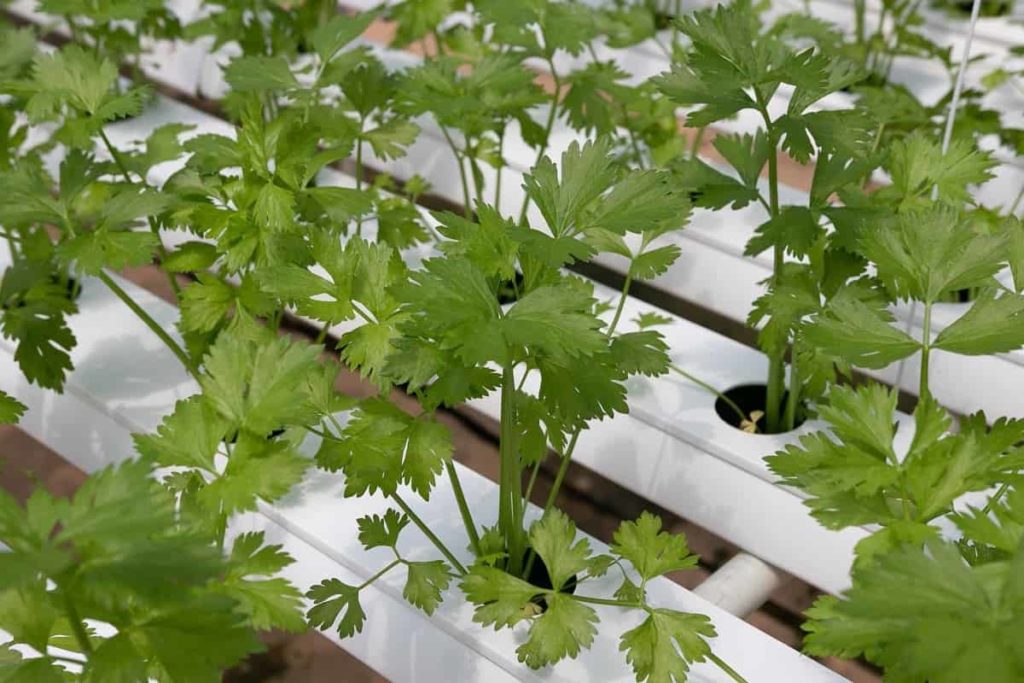
By abandoning the plant as a carrier for nutrients and instead using water to minimize inputs and maximize output, hydroponic farming is a subset of hydroculture. A healthy crop yield is guaranteed faster, and monitored nutrient absorption is promoted with the help of nutrients tailored to the crop.
A hydroponic system is growing crops without soil, often called soilless farming. A liquid nutrient solution is a mixture of essential plant nutrients in the water. Plant roots are suspended in a static liquid solution or a continuously flowing nutrient mixture. Hydroponic growing systems require constant attention to crops, unlike traditional farming systems.
How to start hydroponic farming/gardening from scratch in India
Advantages of hydroponic farming
- Higher crop productivity than conventional farming, efficient use of plant nutrients, and reduced wastage of resources.
- It provides a controlled climate system to help grow crops year-round.
- Plant roots have direct contact with water-soluble nutrients, thus aiding rapid absorption and growth. Since crops are grown in a closed environment under a hydroponic farming system, it is free from insects and pests.
- Space usage – A hydroponic plantation requires less space than soil-filled plants. Therefore, according to the framework, when hydroponic vegetable farming is combined with vertical farming strategies, they can use almost 100% less land than conventional farming practices.
- Less labor requirement – Hydroponics farming offers a light labor burden without plowing, herbicides, weeding, and pesticide use and allows farmers to focus on other tasks. It reduces the cost of transporting the crop and saves time for various operations. A lone low-maintenance worker can completely supervise a small hydroponic farm.
- Crops grow faster – Hydroponic farming makes supplements more efficiently accessible for plant absorption. The grower can handle light, heat, supplements, hydration, insects, and other parts of the growing system. The entire cycle can be streamlined for larger, faster-growing plants with better returns.
Equipment required to start hydroponic farming
There are several hydroponic systems, and each system has its own specific needs. However, some standard equipment or materials are required to set up a hydroponic farm:
- A temperature-controlled greenhouse or indoor shelter
- Flood chamber/Reservoir
- Electronic meters
- Grow Trays
- Power backup
- Water channels for circulating water through the plant’s closed-loop frame
- Water tanks
- Nutrient solution
- Grow lights
Tips for growing hydroponic plants
- When starting a hydroponic farm, the first thing to consider is what type of plants you want to grow. This decision you make determines what type of hydroponics system you can use. It also helps you decide what kind of lighting and space you need.
- Growers need to test the quality of their water supply before introducing it to a hydroponic system.
- The absence of soil in hydroponics means that there must be something through which the plants can be propagated and help the nutrient solution to flow efficiently.
- The definition of an excellent growing medium allows a good balance of oxygen and moisture to be absorbed by plant roots. If you’re growing plants for kitchen use, know that hydroponic grow systems can produce much more, so you don’t need as many plants as you normally would.
- If starting your hydroponic garden with young plants or seedlings, carefully wash the soil off the plant roots before transplanting them into your hydroponic system.
In case you missed it: Hydroponic Farming in USA: How to Start, a Guide for Beginners
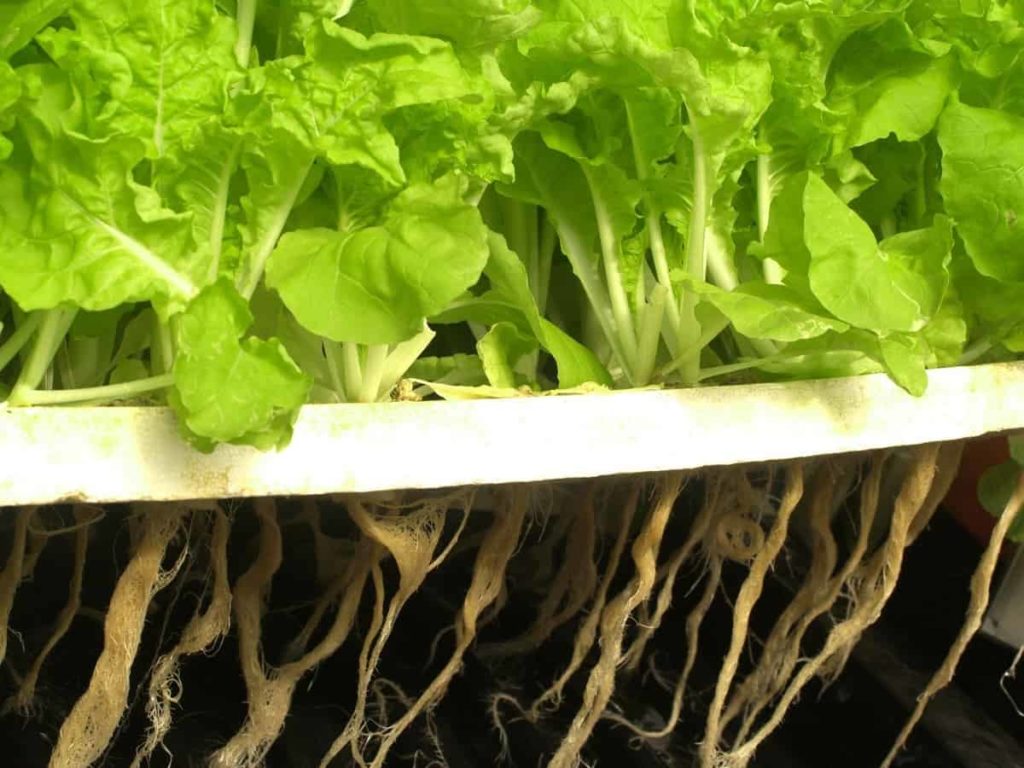
Lighting needed for hydroponics farming
With indoor hydroponics, it is essential that you strictly control the light. You can isolate the grow room using a commercial grow box to achieve this. Or, locate your grow room in an indoor space with no windows and cover it with mylar to increase your light distribution. With so many hydroponic lighting options out there, your choice will depend on the size of your garden and the plants you’re growing.
T5 or Compact fluorescent grow lights are great for beginners, as they are inexpensive, low heat, and suitable for growing leafy vegetables. LEDs are efficient and reliable, and while they are still quite expensive to purchase, the lifetime cost will be lower than other grow lights. To determine how much light you’ll need per square foot of gardening space, you must know how much light your plants need.
Small leafy plants such as Lettuce require about 20-30 watts per square foot, so a light with a true output of about 300 watts will cover 10 to 15 square feet of Lettuce and similar crops. To increase the lighting efficiency, consider installing reflectors. You can even help reduce the heat your lights generate using air-cooling reflectors.
Nutrient solution tips for hydroponic plant growth
For anyone starting in hydroponics, the easiest way to ensure your plants are getting the nutrients they need is to ensure they are getting the nutrients they need. Purchase a commercial hydroponic fertilizer formulated for the plants you want to grow and closely follow the directions for use. A hydroponic nutrient solution has all the nutrients plants normally get from the soil. These essential nutrients can be purchased at a hydroponic supply store.
Most are highly concentrated, using 2 to 4 teaspoons per gallon of water. They come in liquid mixes or strength mixes, usually with at least two different containers, one for growing and one for blooming. Liquids are more expensive and easier to use. They dissolve rapidly and completely in reservoirs and often contain an additional pH buffer. Powerful varieties are cheaper and require a little more attention.
They must be mixed more thoroughly and often do not completely dissolve in the reservoir. Most do not have a pH level buffer. Like soil, hydroponic farming systems can fertilize organic or chemical nutrients. Maintaining an organic hydroponic system is quite a lot of work. Organic compounds tend to clump together and cause clogging of pumps. Some hydroponic gardeners only supplement their gardens with organic nutrients, using chemical nutrients as the main food supply.
A liquid nutrient solution will dissolve more efficiently, and two- or three-part solutions are the easiest to use at all stages of plant growth. You must monitor and top up the nutrient solution in your reservoir. Keep an eye on the below nutrient solution factors for growing hydroponic plants:
- Temperature – Optimum rooting temperatures vary by plant.
- pH Level – The pH of a solution measures its acidity and must be closely monitored to ensure that plant roots can absorb the nutrients they need. For starters, it’s best to check your solution’s pH daily, always checking it after adding nutrients. It uses a liquid test kit, test strips, or a digital meter. Optimal pH levels change, so you’ll need to refer to the chart. For Lettuce, the pH level is 6.0-6.5. If the pH needs to be adjusted, apply chemicals made specifically for hydroponics, as they are the safest to use.
- Electrical Conductivity (EC) – Because the nutrients used in hydroponics are mineral salts, an EC meter can measure the strength of a nutrient solution. Keep the EC level around 1.2-1.6 for most plants for the vegetative stage. EC increases in the system due to plant evaporation and water transpiration. And if it gets too high, the solution will be toxic to your plants. Therefore, you should measure the EC of the nutrient solution every few days and adjust it as needed.
Types of hydroponic systems
Growing methods for each crop can be different, as can hydroponic systems. Choosing the right hydroponic system for the selected plant species, the physical hydroponic location and the amount of potential interaction with the system is essential and should be well thought out. Hydroponic systems need to;
In case you missed it: Hydroponic Farming in Bangalore: How to Start, Setup Cost, Companies, and Suppliers
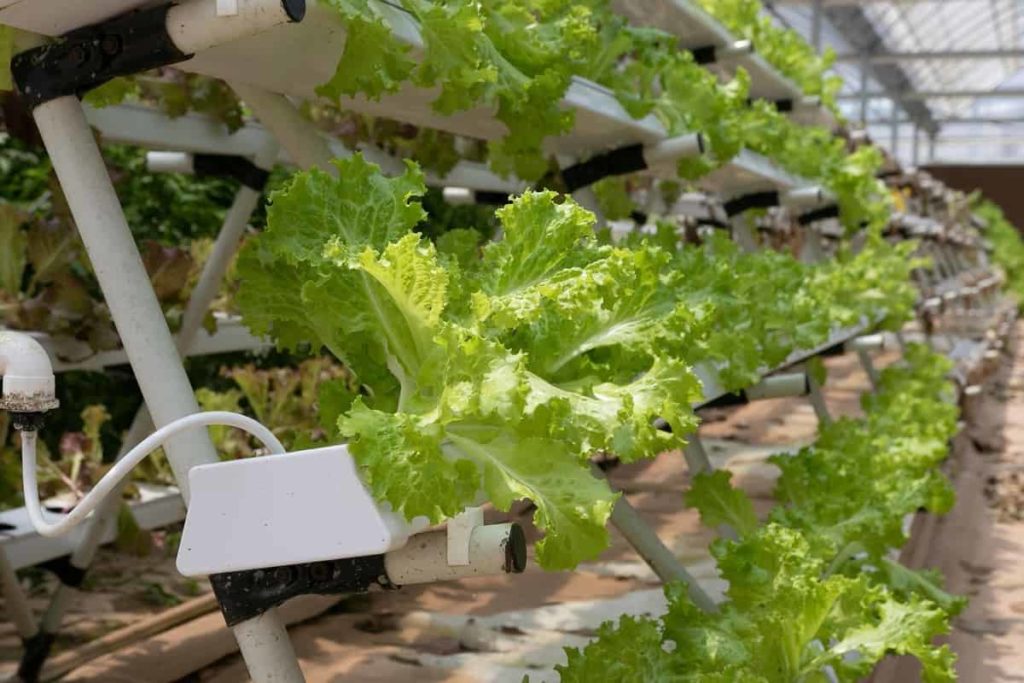
- Provide fresh, properly balanced nutrients to the root system.
- Maintain adequate gas exchange between roots and nutrients.
- Keep a backup to protect the root system from dehydration during a power blackout.
Different types of hydroponic systems
1. Nutrient Film Technique (NFT)
In the nutrient film technique, gully channels are used to grow plants. In this system, the nutrient solution flows through these gully channels. It is designed for quick turnaround; it is used for lettuce and herb growers. A constant flow of nutrients is introduced continuously without any growth medium.
Power and pump failure can be fatal in this environment, so adequate backup is indicated—a very efficient system. It is best for Vegetables, Ornamental Crops, Tomatoes, Lettuce, and Herbs. One of the advantages of NFT is the easy installation of the system and the relatively low cost of materials. There are mainly two different types of NFT systems:
- Horizontal NFT system
- Vertical NFT system
2. Aeroponic system
The aeroponic system greatly reduces the water used to grow crops. In this system, plant roots receive their nutrients and water through an aerosol mist that is sprayed onto them. Plant roots obtain oxygen from the air during the suspension. Aeroponic systems are relatively difficult to manage but very economical in nutrient and water use.
3. Drip hydroponic system
A drip hydroponic system has to be one of the most dynamic vertical hydroponic farming frameworks. It uses a pump to maintain plants with water and supplements. This hydroponic farming uses small-scale producers to spray additive formulations onto plants directly. It is a shelter for a huge air circulation problem, providing constant watering and nourishment with hoses, lines, and developing media.
It is the most common and simplest hydroponic system used for Tomato and Capsicum commercial crops. Very low maintenance and simple. Adopts a timer to start a pump that delivers nutrient-rich water along a drip line to the base of the plant. The run-off solution is collected in reservoirs. Perlite, Rockwool, and clay pellets are used as the medium. It is best for Peppers, Capsicum, Tomatoes, and Herbs.
4. Ebb and Flow
This system places plants in a wide-growing bed. This growing bed is filled with a medium such as perlite or rock wool. After establishing the plants, you’ll fill the grow bed with additional arrangements. It is purely organic farming. This framework deals with the principle of flooding the roots routinely and for a more limited period.
It is especially good for small-scale hydroponics with high-density plantings. It is an ideal choice where space is limited. Growing trays are flooded. Growing rocks, rock wool, LECA, or vermiculite can be used as the medium. Simple, reliable, and low-cost. It is best for Shallow Root Vegetables and herbs.
5. Dutch Bucket Growing System
As the name suggests, this growing system uses buckets to grow plants. These buckets can change in size depending on the grower’s needs. The bucket contains a growing media such as vermiculite to support the growing plant. Plants with large roots are grown using the Dutch bucket system, such as Tomatoes and Cucumbers.
6. Deep Water Culture
It works for many plants. However, it is a gift for larger plants, especially those with extensive roots. In this framework, the establishment of the plant is suspended in a supplemental arrangement, and you present the air directly with a diffuser or air stone. It will help if you put the plants in the net pots to get them. At the point when you cause plants to sit in unlimited oxygen-providing supplements, your plants accomplish insane development.
In case you missed it: Hydroponic Farming in Hyderabad: Setup Cost, Training, Companies, and Equipment Suppliers
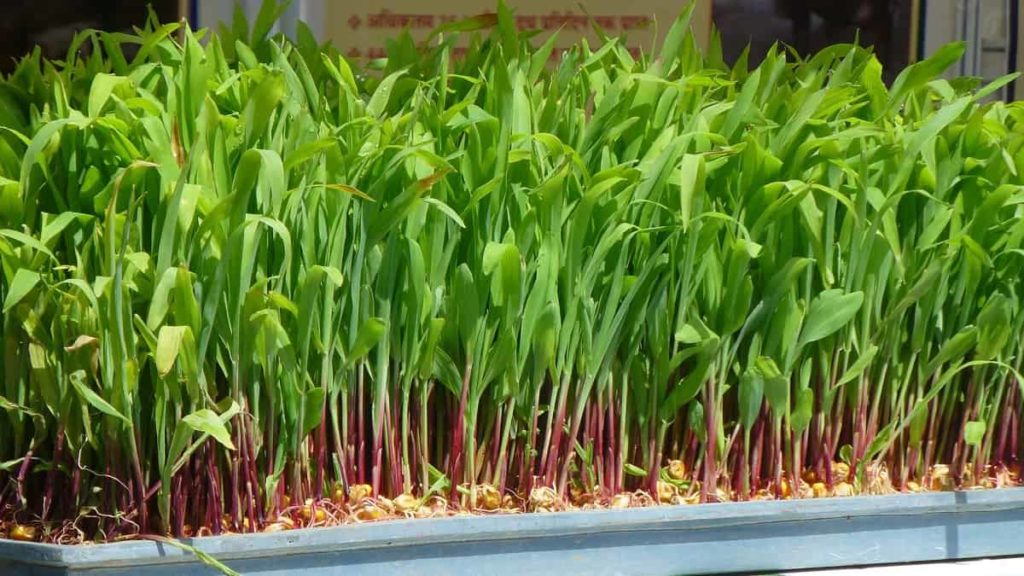
Hydroponic growing mediums
Consider drainage characteristics, water retention, and system compatibility when choosing a growing medium. A good medium should hold moisture well to keep the roots moist and provide good drainage to avoid waterlogging. The medium should have a neutral pH. Resistance to fungal infections is also important because fungal infections are difficult to eradicate. Growers can mix mediums.
Vermiculite and perlite are best used together in a 50/50 ratio. Coconut coir is mixed with a medium with high drainage values , such as perlite or LECA (lightweight expanded clay aggregate). The resilience of coconut fibers to fungal growth makes it an excellent growing medium. The main purpose of a growing medium is to aerate and support the plant’s root system and flow water and nutrients. Different growing mediums work well in different hydroponic systems.
Hydrocorn: A fast-draining medium, such as Hydrocorn, works well in ebb and flow type systems. Hydrocarbon is a light-expanded clay aggregate. It is a light, aerated growing medium that allows plenty of oxygen to enter the plant’s root system.
Rockwool – Rockwool is made from molten basalt rock spun into fine fibers and is widely used in commercial hydroponic gardens. Rockwool is mostly air, so controlling the water-to-air ratio is easy. Rockwool is available mainly in blocks, cubes, and granules. Rockwool is not biodegradable, requires a lot of energy to make, and requires gloves and masks to be worn when handling it.
Coconut fiber or cocoa coir is made from shredded and ground coconut husks. Fibers are rich in natural hormones that reduce fungal growth and improve germination and root growth. Vermiculite is water-retentive, and perlite is air-retentive. Available in many forms, compressed bricks require washing before use to allow the coconut fibers to expand and loosen.
Perlite – Perlite is the original hydroponic medium and is inexpensive. Perlite is a mined mineral that is made of glass pellets. It has excellent oxygen retention and good filtration properties. It is mixed with mediums that lack drainages, such as vermiculite and coconut fiber. Perlite has low water retention properties and dries quickly if left without water.
Vermiculite – Vermiculite is a mined mineral that undergoes exfoliation when heated rapidly to form flakes. It is a type of soil that retains water well but has poor drainage. Vermiculite is mixed with perlite in a 50/50 ratio to allow the water retention of the vermiculite and the air ration and filtration.
LECA (Lightweight Expanded Clay Aggregate) – LECA is designed for commercial hydroponics. Baked clay pellets have a neutral and inert pH, so pH control is straightforward. LECA is lightweight with maximum filtration and ventilation properties. LECA is used with a denser medium. LECA must be washed before first use. It can be reused when cleaned and sterilized.
In case you missed it: Growing Strawberries Vertically from Scratch: Methods, Tips, and Ideas
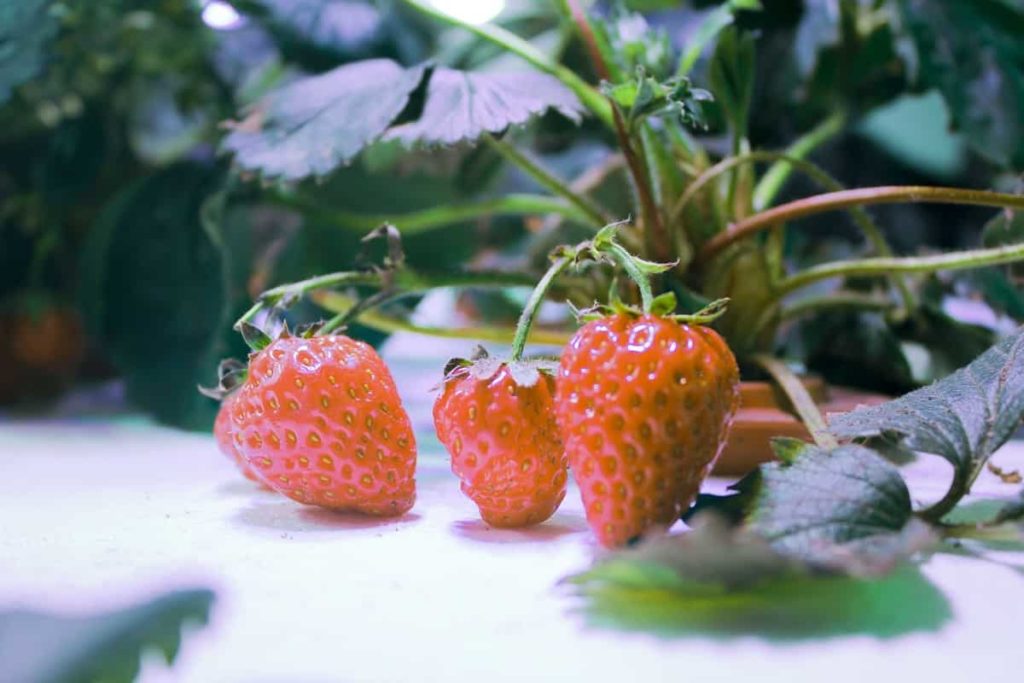
Cost of setting up a one-acre hydroponic farm
The final cost of setting up a hydroponic farm on one acre of land will be Rs. 110 lakhs to Rs.150 lakhs, excluding land value. This cost (after INR 1.1 and up to INR 1.5 Crore) varies according to the technology and automation.
Most profitable hydroponic crops to grow for beginners
- Microgreens
- Lettuce
- Radishes
- Sweet Bell Peppers
- Herbs
- Flowers
- Hydroponic Vegetables: This produces Tomatoes, Cucumbers, Lettuce, and Peppers.
- Hydroponic Fruits: This produces fruit crops such as Strawberries, Blueberries, and other types of fruit that grow on vines or shrubs.
- Hydroponic Herbs: This produces culinary herbs like Basil, Mint, Thyme, Rosemary, etc., or medicinal herbs such as Cannabis.
Future of hydroponic farming in India
Hydroponic farming is a new concept in India. Several companies provide training and have set up some vertical farms using hydroponics. This farming method is hailed as the future of farming. Due to rapid industrialization and the growing population, traditional farming methods cannot adapt. ‘As of now, India imports about 85 percent of foreign vegetables. Through soilless farming, it has a huge potential for change. For example, hydroponic farming can yield approximately 300-400 tons of Lettuce per year compared to 9-10 tons of soil-based farming.
Elements of a Hydroponic System
Plant roots need water, moisture, nutrients, and oxygen. A fundamental principle in all hydroponic systems is how these nutrients will be delivered to the plant roots. Four important elements are considered before building or buying a hydroponic system online. The four main elements of a hydroponic system are the water delivery system, the nutrient injection system, the media for holding the roots, and the irrigation catchment.
Hydroponic farming business plan for beginners
If you want to start a hydroponics farming business or expand your existing hydroponics farming operation, you need a business plan. A business plan will help you raise funds if needed and plan the growth of your hydroponics farming business to improve your chances of success.
- Management – The first step before starting a hydroponics business is to create a detailed business plan. As a hydroponics business, an indoor area typically involves setting up a greenhouse, supplying the plants with the necessary nutrients, installing the entire electrical system and drainage, and packaging and selling the grown food. So, to manage all these tasks, you must prepare a detailed management plan before taking up the startup.
- Market Research – The first step is to survey the market and understand the target demographic and industry. Common vegetable plants like Lettuce or Peppers may or may not be in demand in your area. Therefore, looking for potential customers and analyzing the industry trend is important.
- Training – Hydroponic farming is a modern and innovative method of farming. Many factors can determine how well your farm will perform. Hydroponics relies on a constant flow of water and stable temperature conditions.
- Choosing Crops and Land Acquisition – The next step you should take is to finalize your crop. The most popular plant to grow in hydroponics is Lettuce. Calculate the required area based on the number of crop rows you are planting. Based on this, you can lease or rent a commercial property for hydroponic farming.
In case you missed it: Mulching Tomato Plants, Procedure, and Benefits
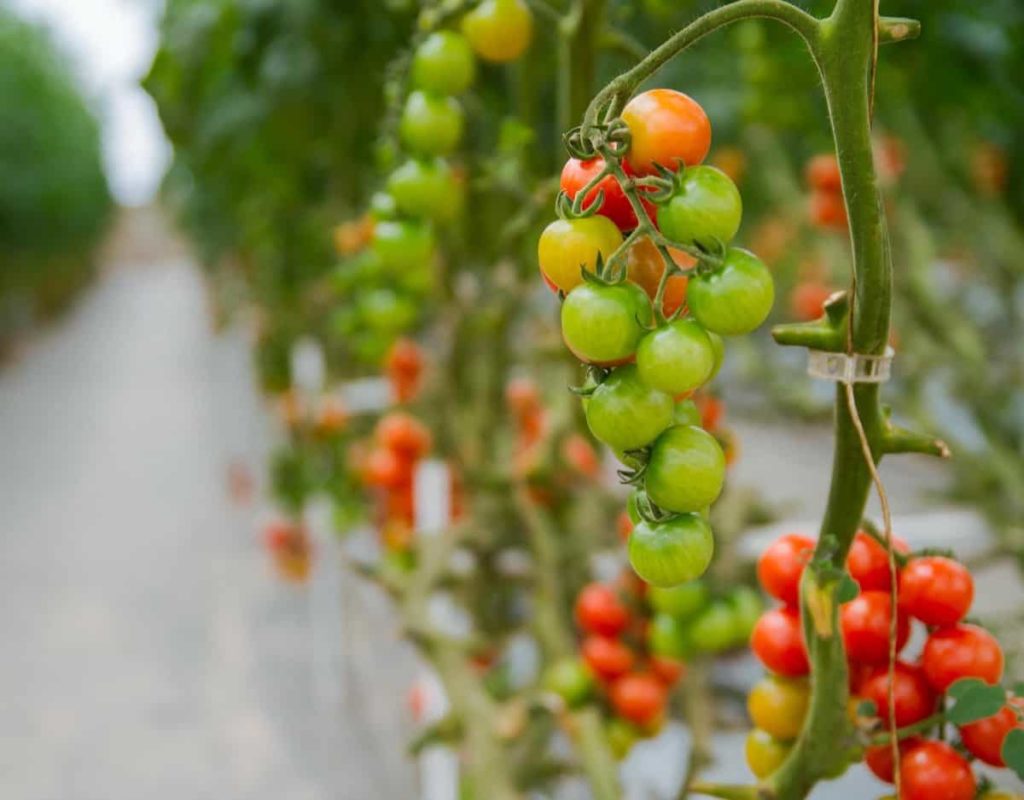
Frequently asked questions about hydroponic farming
Is hydroponic farming profitable?
Hydroponic farming is extremely profitable. It is an example of high production in a small space in any season or climatic condition. Hydroponic vegetables are highly balanced in fiber, minerals, and vitamins. It is the first method of farming/cultivation without soil.
Is hydroponics a good investment?
Yes. Hydroponic business can be a good investment. Hydroponics is a modern farming method where plants (crops or flowers) are grown in certain nutrients instead of soil.
What is the most profitable hydroponic crop?
Leafy vegetables like Lettuce are the most profitable crops to grow in hydroponics because they have the lowest operating costs.
Is hydroponics good for beginners?
Creating an indoor hydroponic system for your vegetables, herbs, and other plants is easier than people think. Hydroponics for beginners is for anyone. The basic idea is to provide water, nutrients, and oxygen to your plant’s roots without soil.
What grows fast in hydroponics?
Mustard Greens, Swiss chard, Spinach, Kale, and Watercress are all fast-growing plants that will thrive in a hydroponic system, and you can usually start harvesting them within a month of planting.
Is hydroponic better than soil?
As mentioned earlier, hydroponically grown plants grow significantly faster than soil-grown plants. It is because plant roots are bathing in nutrients so that they can absorb them easily and directly with minimal effort.
Conclusion
Hydroponic farming means a system of growing crops without using soil and is often called soilless or soil-free farming. Under hydroponic farming systems, plant roots grow in moist inert materials such as rock wool, vermiculite, and a liquid nutrient solution. It involves suspending plant roots directly above a stagnant liquid solution or floating them in narrow channels filled with a nutrient mixture.
If you live in India and are planning to grow plants using a hydroponics system, this article may help you to understand the basics of Hydroponic gardening and Hydroponic farming.
- How to Make Houseplants Bushy: Effective Tips and Ideas
- Innovative Strategies for Boosting Coconut Pollination and Yield
- Pollination Strategies for Maximum Pumpkin Yield
- The Complete Guide to Chicken Fattening: Strategies for Maximum Growth
- Natural Solutions for Tulip Problems: 100% Effective Remedies for Leaf and Bulb-Related Issues
- Revolutionizing Citrus Preservation: Towards a Healthier, Greener Future
- Natural Solutions for Peony Leaf and Flower Problems: 100% Effective Remedies
- Maximizing Profits with Avocado Contract Farming in India: A Comprehensive Guide
- Natural Solutions for Hydrangea Problems: 100% Effective Remedies for Leaf and Flowers
- The Ultimate Guide to Choosing the Perfect Foliage Friend: Bringing Life Indoors
- From Sunlight to Sustainability: 15 Ways to Use Solar Technology in Agriculture
- The Ultimate Guide to Dong Tao Chicken: Exploring from History to Raising
- The Eco-Friendly Makeover: How to Convert Your Unused Swimming Pool into a Fish Pond
- Mastering the Art of Delaware Chicken Farming: Essentials for Healthy Backyard Flocks
- 20 Best Homemade Fertilizers for Money Plant: DIY Recipes and Application Methods
- How to Craft a Comprehensive Free-Range Chicken Farming Business Plan
- Brighten Your Flock: Raising Easter Egger Chickens for Beauty and Bounty
- How to Optimize Your Poultry Egg Farm Business Plan with These Strategies
- Subsidy for Spirulina Cultivation: How Indian Government Schemes Encouraging Spirulina Farmers
- Ultimate Guide to Raising Dominique Chickens: Breeding, Feeding, Egg-Production, and Care
- Mastering the Art of Raising Jersey Giant Chickens: Care, Feeding, and More
- Ultimate Guide to Raising Legbar Chickens: Breeding, Farming Practices, Diet, Egg-Production
- How to Raise Welsummer Chickens: A Comprehensive Guide for Beginners
- How to Protect Indoor Plants in Winter: A Comprehensive Guide
- Ultimate Guide to Grow Bag Gardening: Tips, Tricks, and Planting Ideas for Urban Gardeners
- Guide to Lotus Cultivation: How to Propagate, Plant, Grow, Care, Cost, and Profit
- Agriculture Drone Subsidy Scheme: Government Kisan Subsidy, License, and How to Apply Online
- Ultimate Guide to Raising Araucana Chickens: Breed Profile, Farming Economics, Diet, and Care
- Bringing Hydroponics to Classroom: Importance, Benefits of Learning for School Students
- Ultimate Guide to Raising Polish Chickens: Breed Profile, Farming Economics, Diet, and Care
- Ultimate Guide to Raising Australorp Chickens: Profile, Farming Economics, Egg Production, Diet, and Care
- Silkie Chicken Farming: Raising Practices, Varieties, Egg Production, Diet, and Care
- Sussex Chicken Farming: Raising Practices, Varieties, Egg Production, Diet and Care
- Homemade Feed Formulations for Livestock: Discover Cost-effective Starter to Finisher Feed Recipes
- 20 Best Pig Weight Gain Supplements: Top Swine Weight Gain Formulas
- Ultimate Guide to Elderberry Farming: Propagation, Planting, Yield, Cost, and Profit
I am very much interested to do hydrophonics farming on my terrace as a begennier.
For that i want practical detail knowledge on same.
Hence request you to suggest anything where I can understand practically.